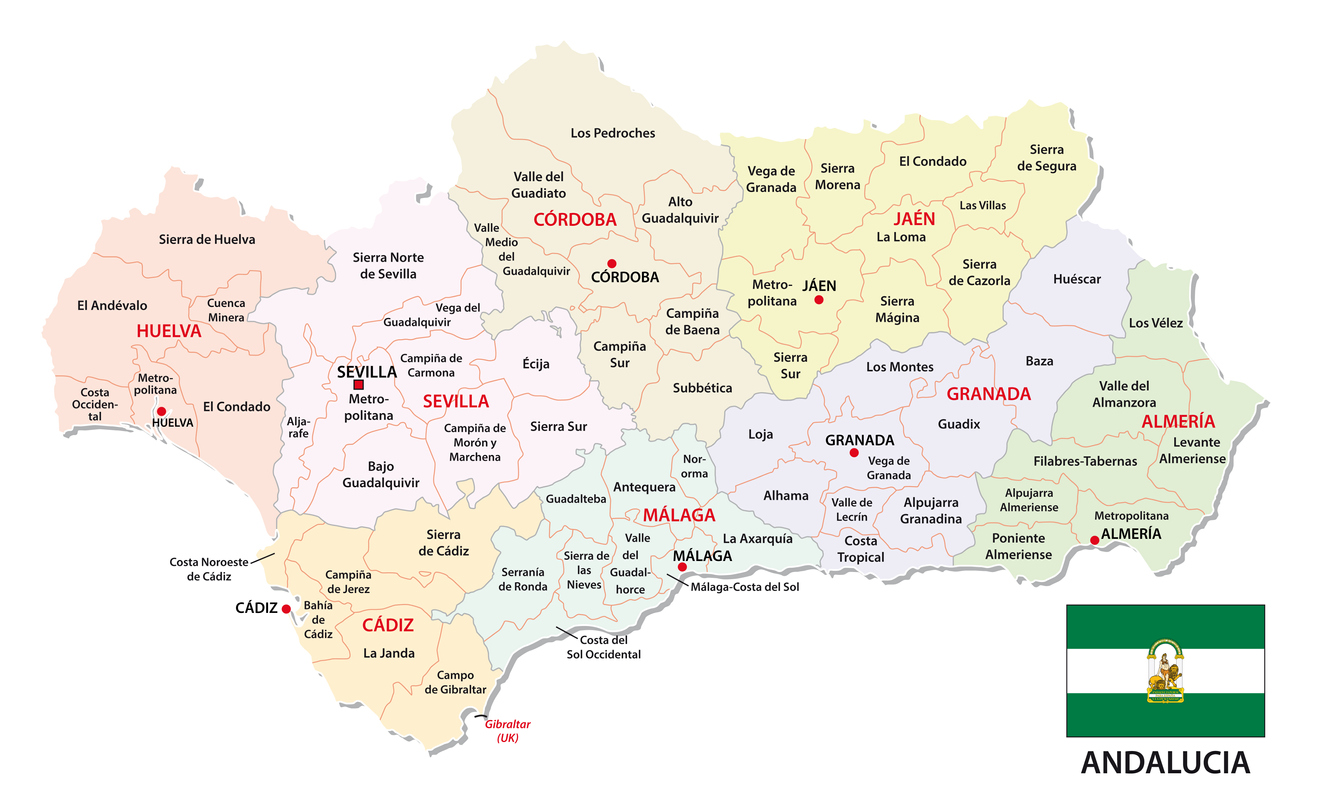 Rainer Lesniewski
Rainer Lesniewski
As this blog has repeatedly shown, Spain is diverse indeed, but when many around the world think of this country, what jump to mind first are iconic, dramatic things like colourful flamenco dancers with clacking castanets; spectacular Moorish palaces and fortresses; and the life-and-death spectacle of bullfighting – all cultural elements most often associated with the south of Spain, particularly the sprawling autonomous community of Andalucía. Much of this sprawling region’s culture dates back to the Middle Ages, when it was the heartland of al-Andalus, the patchwork of Muslim kingdoms that held sway here (and extended into much of the rest of the Iberian Peninsula, as well) for more than 700 years, from 714 to 1492.
What that and centuries of subsequent history has left Andalusia‘s eight provinces with is an incredibly rich historic, architectural, and cultural legacy – both in its cities and its lovely whitewashed towns – mixed with an extraordinary natural heritage including fantastic beaches, soaring mountains, and a variety of terrain providing no end of ecotourism and adventure thrills. And while most first-time visitors tend to stick to the beaches and/or the big three destinations Córdoba, Granada, and Seville, as you’ll see from the following overview, Andalusia is more than rich enough to keep you coming back year after year for something new and exciting.
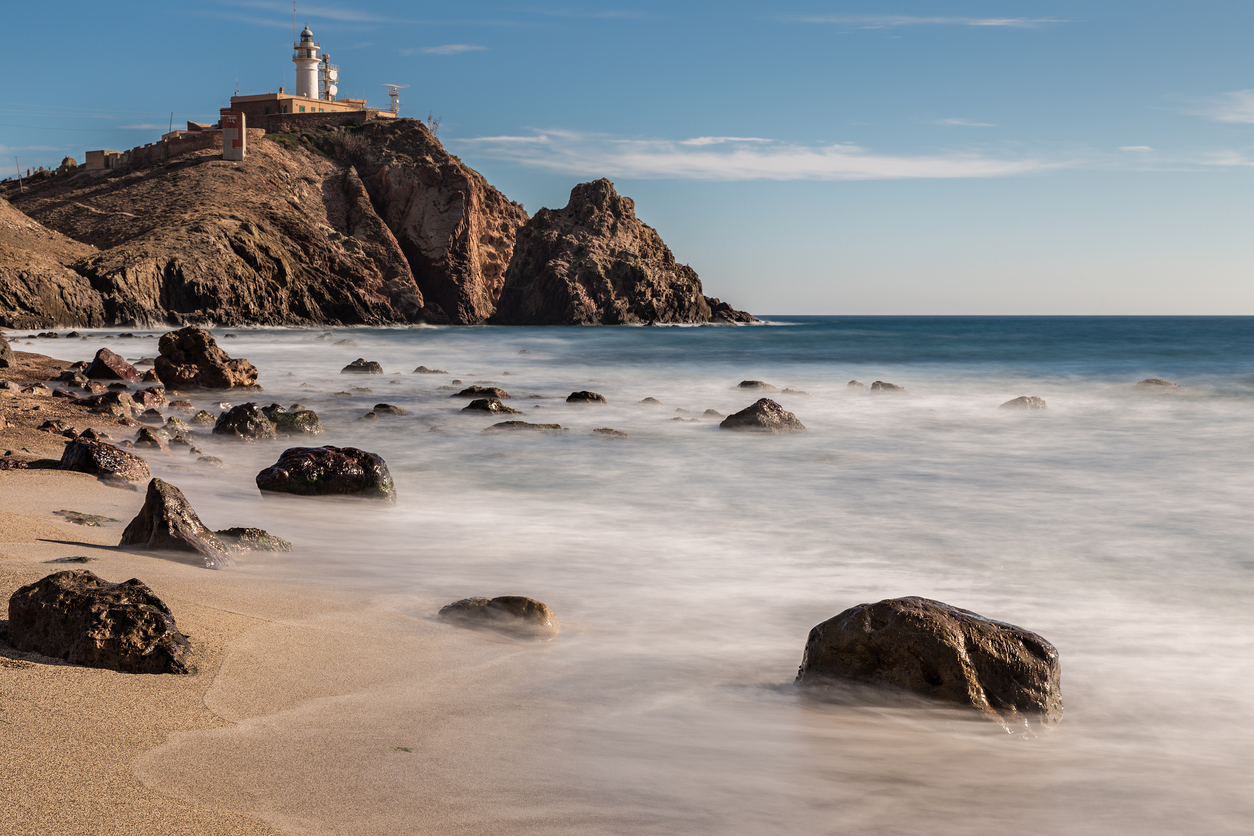 Estellez
Estellez
Almería
Andalusia’s arid easternmost province is cherished by many Spanish holidaymakers (and being discovered by increasing numbers of foreigners) for its hundred kilometres (67 miles) worth of stunning, relatively less crowded beaches, as well as nature reserves like Cabo de Gata, Spain’s largest protected coastal area (and a UNESCO Biosphere Reserve): 37,000 hectares (143 square miles) full of amazing beaches, natural formations and historic sites – all so impressive it has been used as the backdrop for films including Lawrence of Arabia, Conan the Barbarian, and Indiana Jones and the Last Crusade. In fact, Almería is home to a “mini-Hollywood” thanks to its popularity with filmmakers, and no fewer than three attractions have grown up around sets for Westerns like The Good, the Bad, and the Ugly and A Fistful of Dollars: Oasys Theme Park, Fort Bravo, and Western Leone.
Meanwhile, with landmarks like its 10th-century Moorish Alcazaba and Gothic/Renaissance Cathedral of the Incarnation, built in the mid-16th century, Almería city (pop. 193,000), is a very much off-the-beaten-path provincial capital that gives visitors a window into Spanish life unmolested by tourist hordes.
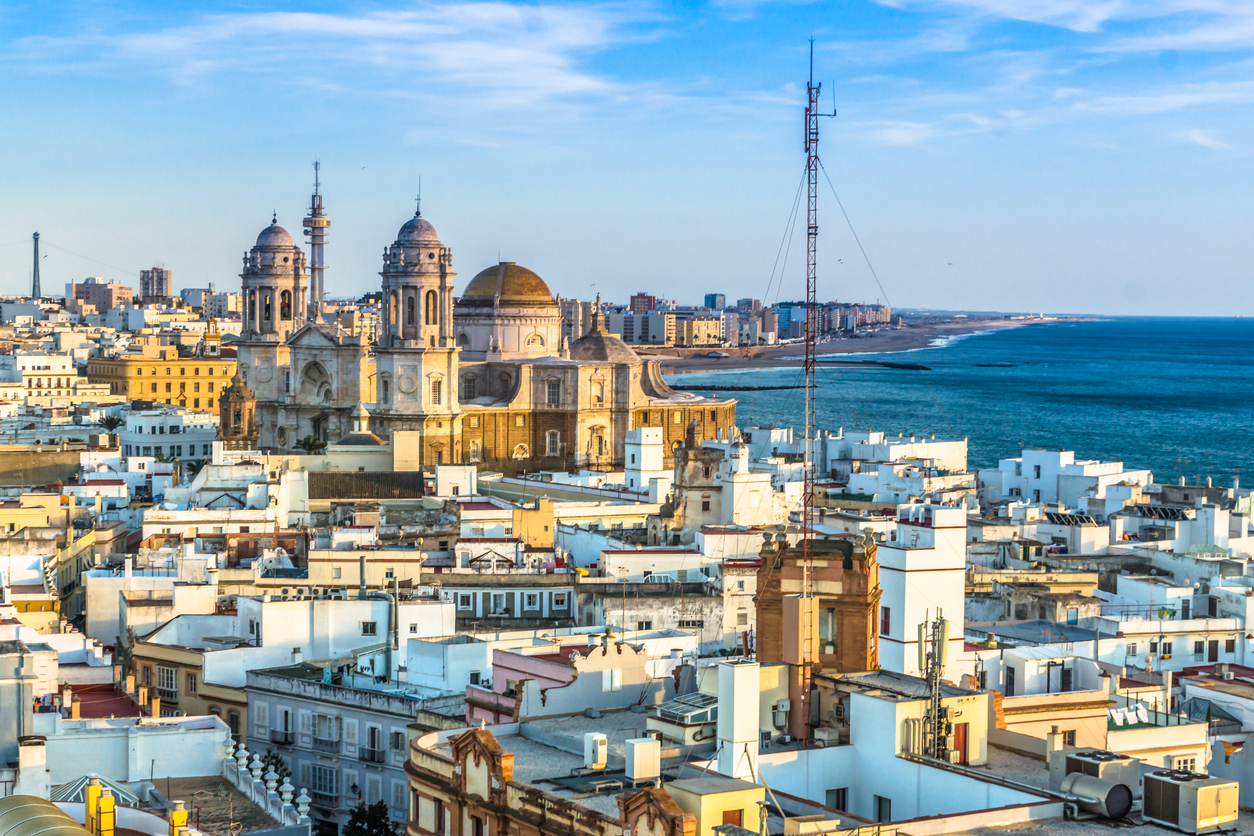 Daniel_Keuck
Daniel_Keuck
Cádiz
The region’s southernmost province offers a variety of natural environments, from fabulous Costa de la Luz beaches such as Playa Bolonia to arid plains to lovely forested mountains dotted with lovely white hill towns to coastal wetlands. These last form the core of one of Europe’s great natural parks, Doñana (shared with Huelva and Seville), one of more than 20 lovely nature reserves and areas across the province.
The two charming cities not to miss here include the capital, also called Cádiz (pop. 117,000), distinguished not just by its romantic architecture and status of home of Spain’s navy, but also because it’s the oldest continuously occupied city in Europe, founded by the Phoenicians more than 3,000 years ago; its beauty has landed it movie shoots as well, such as the spy flicks Die Another Day and Knight and Day. The annual pre-Lenten Carnaval here is one of Spain’s most famous and fun. Just a half hour inland, larger Jérez de la Frontera (pop. 213,000) has its own share of fine landmarks, and is especially known for its sherry producers, flamenco scene, and horse culture (home to the Royal Andalusian School of Equestrian Art).
And finally, the southern tip of Cádiz (specifically the city of La Línea de la Concepción) is the gateway to the singular British colony of Gibraltar with its dramatic rock and English-infused culture and lifestyle.
 Timor Espallargas
Timor Espallargas
Córdoba
Also a province of plains and mountains, it’s most famous by far for its eponymous capital city (pop. 325,000) with an intensely atmospheric, whitewashed Judería (mediaeval Jewish quarter) and some of Andalusia’s grandest Moorish sites, most notably the jawdropping Mezquita (above, the huge 8th-century mosque turned Catholic cathedral) and the the Medina Azahara, ruins of a 10th-century caliph’s palace. More Moorish and Christian sites are scattered across the rest of the province, making for some rewarding, picturesque road trips. A wonderful time to come is in May for the city’s Fiesta de los Patios, when several dozen courtyards of the old quarter bedeck themselves in colourful blooms in competition for most beautiful.
 M. Kreuschitz
M. Kreuschitz
Granada
Like Cordóba to its northwest, this province is a mix of flat and hilly/mountainous, semi-arid and verdant, with the old quarter of its capital, Granada city, by far the main draw for visitors, thanks mostly to its spectacular Moorish heritage, especially the Alhambra and next-door Generalife, the palace-fortress complex that from the 11th to 15th century was the seat of the rulers of the Muslim kingdom of Granada (also up here is one of Spain’s most marvelously sited paradores, the quasi-public inns often located in historic structures). Right across from it is the atmospheric old Albaicín district and Sacromonte hill, the traditional gypsy neighbourhood famous for dwellings hewn out of the soft hillside rock, now many occupied by bars, restaurants, and tablaos (flamenco clubs). Other musts are the early-18th-century Baroque/Renaissance cathedral, finished in 1704; the adjoining 16th-century Royal Chapel, site of the tombs of the iconic 15th-century monarchs King Ferdinand and Queen Isabella; and La Cartuja, an elaborate Baroque monastery and church built in the 16th and 17th centuries.
Outside the capital, there’s a subtropical coast with lovely beaches and whitewashed towns such as Almuñécar and Salobreña, as well as the snowcapped Sierra Nevada range includes lovely regions such as the Alpujarras, with fantastic ecotourism and rural tourism in tiny mountain villages. It also boasts continental Spain’s highest peak, Mulhacén (3,479 metres/11,413 feet), as well as one of Spain’s best ski areas.
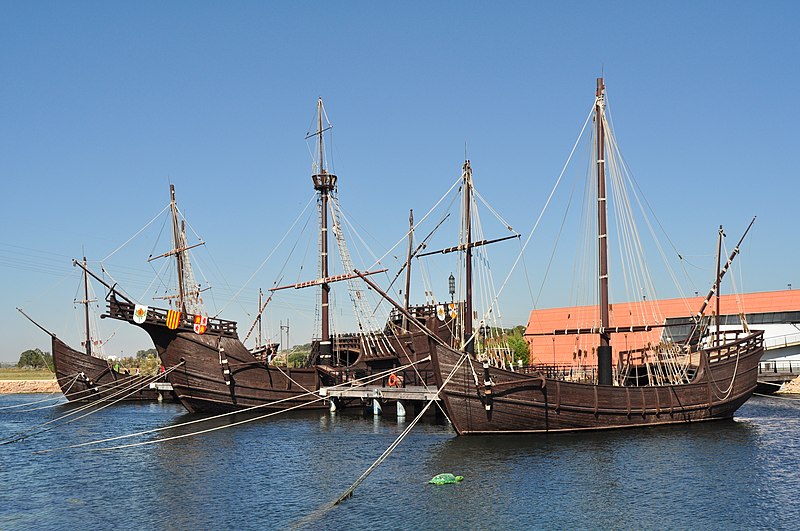 Luis Rogelio HM
Luis Rogelio HM
Huelva
Andalusia’s westernmost province is also one of its most unspoilt, and best known for its fantastic Atlantic beaches (some say Spain’s best) such as Castilla and Mazagón, as well as ecotourism and rural tourism, including impressive nature reserves like Doñana (shared with Cádiz and Seville) and Sierra de Aracena/Picos de Aroche, and Marismas de Isla Cristina. Foodies will also be interested in visiting the northern-Huelva town of Jabugo, famous for its production of Spain’s famous ibérico cured ham.
Then of course there’s the eponymous provincial capital, with a history dating back some 3,000 years (it’s thought to have been the site of ancient Iberia‘s Tartessian civilisation). In and around this pleasant city of around 150,000 are a number of interesting landmarks, including the 15th-century Our Lady of la Cinta Chapel, where Christopher Columbus prayed before setting sail on his first voyage of discovery; mid-13th-century Franciscan La Rábida Friary, where Columbus lived for two years; the nearby Muelle de las Carabelas with boardable replicas of the explorer’s three ships; and the Barrio Obrero Reina Victoria (Queen Victoria Workers’ Neighbourhood), a still inhabited Victorian enclave built in 1916 for its British workers by the Rio Tinto Company, which extracted minerals from a local mine in the late 19th and early 20th centuries. Finally, a highlight of the calendar here is another of Spain’s most notable pre-Lenten Carnaval celebrations.
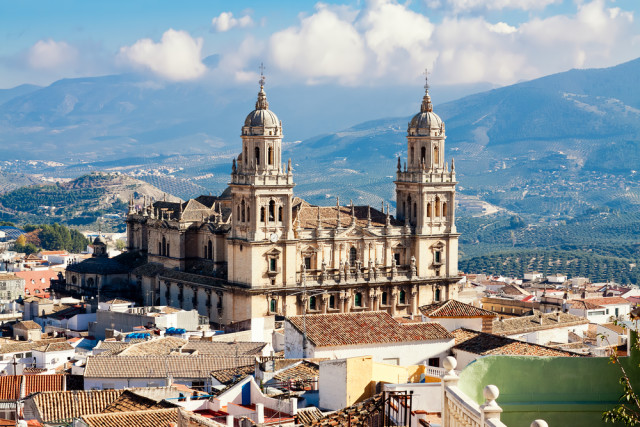 Migel/Shutterstock
Migel/Shutterstock
Jaén
Sitting right in the middle of north Andalusia, this landlocked province is best know as the epicentre of Spain’s olives and olive oil industry. Its capital city is an untouristy, under-the-radar gem with two main icons, crenellated, mid-13th-century Santa Catalina Castle atop the eponymous hill and the monumental Cathedral of the Assumption of the Virgin (above) on Plaza Santa María, one of Andalusia’s best Renaissance exemplars, begun in 1570, completed in 1802, and also home to the fantastic Parador de Jaén).
Outside the city, you can tour olive producers; the Moorish “Route of the Caliphate” in towns like Alcalá la Real, Alcaudete, and Martos, you can explore Arab castles and other sites, in addition to churches and other buildings built in Mudéjar style characteristic of Moorish craftsmen who stayed on after the area’s reconquest from the Moors in the mid-13th century; and a pair of UNESCO World Heritage towns, Úbeda and Baeza, hich thanks to a thoroughgoing makeover in the 16th century are now extraordinary examples of open-air museums of the Renaissance. There’s also an adventure/ecotourism side out here, too, especially in the Natural Park of Sierra de Cazorla, Spain’s largest protected reserve (and in Europe second largest only to Germany’s Black Forest), where olive trees give way to for verdant greenery and hiking trails where visitors can spot deers, wild boar, a plethora of birds, and sundry other wildlife.
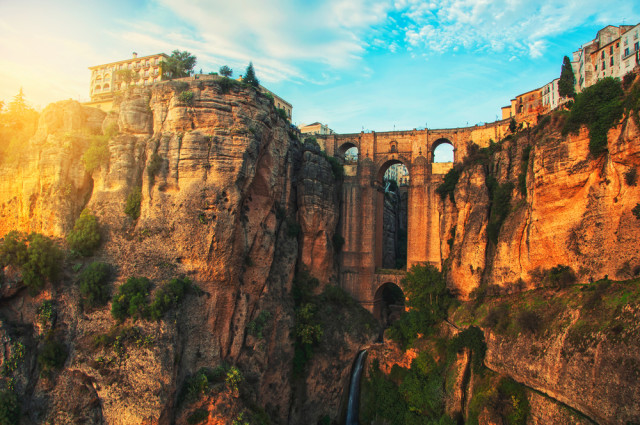 M.V. Photography
M.V. Photography
Málaga
The province at the heart of the Costa del Sol is of course anchored by its dynamic, appealing capital of the same name (pop. 569,000), with musts including the Alcazaba (and home to another parador), the palatial Moorish fortress built in the early 11th century; the birthplace of Pablo Picasso as well as a museum of his early work; and a vibrant dining and cultural scene including the new Soho arts district and an annex of Paris‘ Pompidou Centre.
Then stretching all along the coast are famous beach cities and towns, including Torremolinos, Benalmádena, Fuengirola, posh Marbella, even posher Puerto Banús, and Nerja (also home to Spain’s most spectacular cave). Those who decide to explore the hinterland will also find some fantastic nature reserves such as Sierra de Grazalema, Los Alcornocales, Sierra de las Nieves, and Montes de Málaga, along with gorgeous hill towns such as now artsy Frigiliana, Benadalid, Casares, Gaucín, and Ardales (home to the infamous Caminito del Rey, a walkway high over a dramatic gorge that was once considered the world’s most dangerous; the recently restored version is now safe but still vertiginous). But perhaps Malága’s most spectacular town is Ronda (above, pop. 37,000), perched as it is atop a plunging gorge; enjoy its narrow, winding old quarter, landmarks including one of Spain’s oldest bullrings, its tasty tapas scene. And if possible, try coming (and booking well in advance) in late August for the Feria Goyesca/Pedro Romero Festival, when the town is taken over by music, parades, and colourful folkloric costumes.
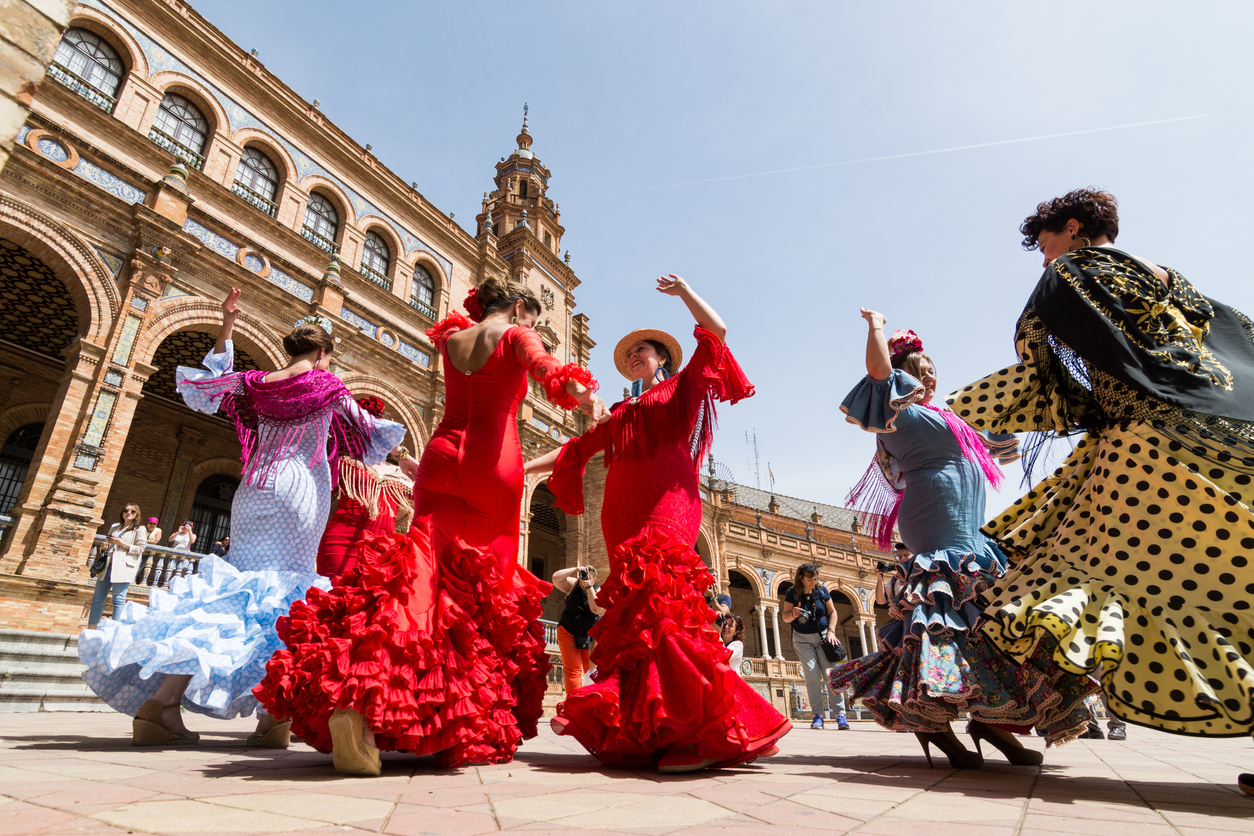 leonovo
leonovo
Seville
Last but resoundingly not least comes Andalusia’s largest province, also landlocked and home to the region’s capital and largest city – as well as third most important in Spain – with a truly impressive wealth of sights, culture, museums, dining, nightlife, and all around experiences. Top landmarks include several that are Moorish in origin, such as the Real Alcázar, a sumptuous palace built for the Muslim caliphs of the day in the 10th and 11th centuries, backdrop for a number of screen productions (most recently the Dorne scenes of Game of Thrones; there’s even a Seville of Thrones tour), and still occasionally used by Spain’s royal family today; and the Torre de Oro (Golden Tower), once part of the mediaeval city walls and now housing a museum. Many more date from after the armies of Castile reconquered Seville from the Moors in 1248, most notably the Cathedral of Santa Maria de la Sede, completed in the first decade of the 15th century (but conserving the Giralda, the minaret of the mosque that once stood here, now the cathedral’s iconic belltower; the grand Plaza de España (constructed for a 1929 World’s Fair) and next-door María Luisa Park (1893, bucolic but also home to several museums including the city’s fascinating archaological museum); the 16th-century Casa de Pilatos palace; and the 270-year-old, 12,000 seat Maestranza bullring (worth seeing, however you feel about bullfighting).
Top neighbourhoods not to miss include Santa Cruz, once the Jewish quarter and still a delight with its whitewashed buildings, narrow streets, and orange trees; as well as Triana, with a very particular traditional character flavoured by the flamenco and bullfight demimondes (also a great destination for tapas).
There’s also an excitingly modern side to Seville, kickstarted by the 1992 World’s Fair, symbolised by Valencia starchitect Santiago Calatrava‘s sleek bridge over the Guadalquivir River to La Cartuja Island, as well as the fairgrounds repurposed into an exciting dining/entertainment complex. But perhaps the most eyecatching of all is the eight-year-old Metropol Parasol (above), popularly dubbed Las Setas (“The Mushrooms”), in the old town’s Plaza de la Encarnación. The world’s largest wooden structure: has a rooftop observation deck and the below-ground Antiquarium museum displaying Seville’s most significant ancient Roman site, dating back to the 1st through 6th centuries AD and only unearthed during construction.
Out in the rest of the province, nature reserves abound, like Seville’s portion of Doñana as well as Sierra Norte de Sevilla, as well as charming, historic small towns, with standouts being Carmona (another of Europe’s oldest cities), Lebrija, Osuna (also a GOT backdrop, its 115-yearr-old bullring recast at a Meereen slaver city fighting pit in the fifth season), and Utrera. There are also some fascinating remnants of ancient Roman Hispania out here, such as Carmona’s Roman amphitheatre (Hispania’s first) and necropolis, as well as the impressive ruins of Italica (founded in 206 BCE, among other things it was the birthplace of emperors Trajan and Hadrian ), just a 15-minute drive north of the capital city.
(Finally, by the way, read more about dining in Seville city here.)

